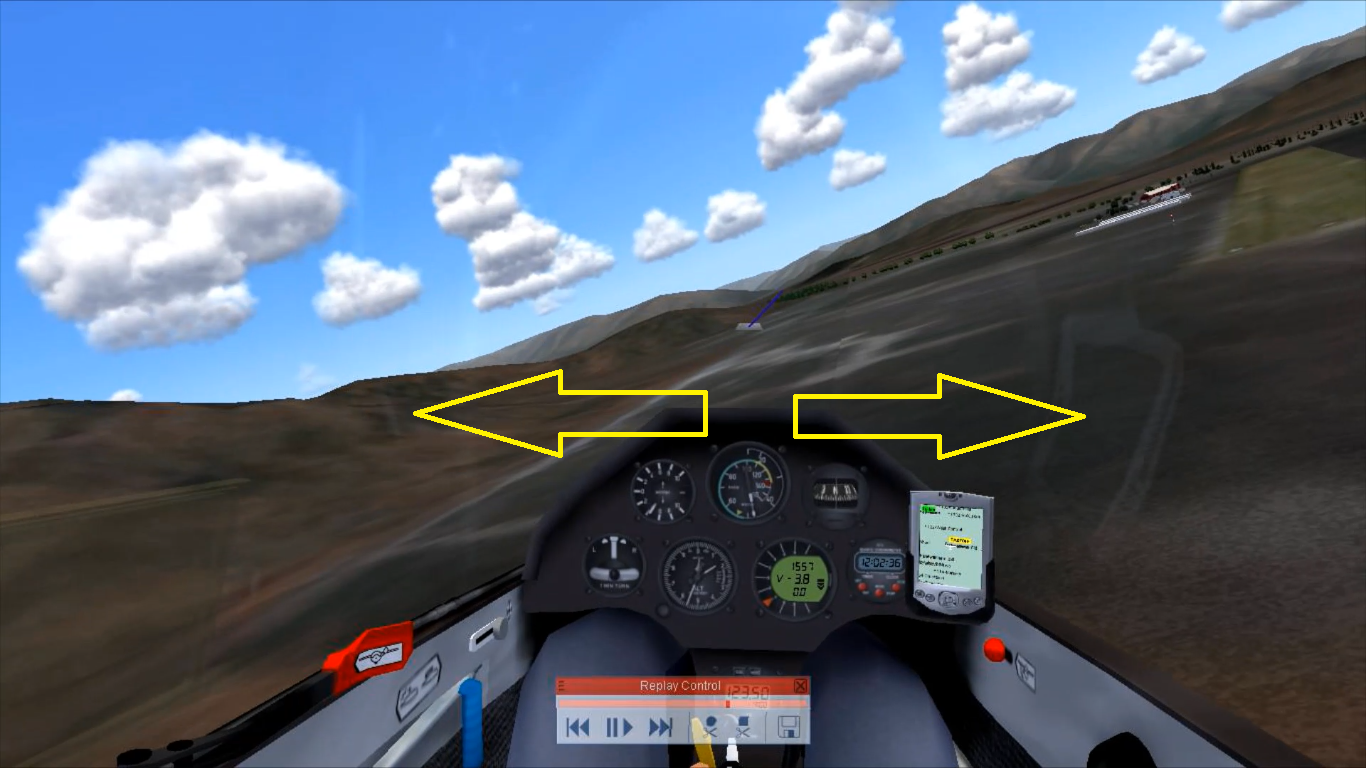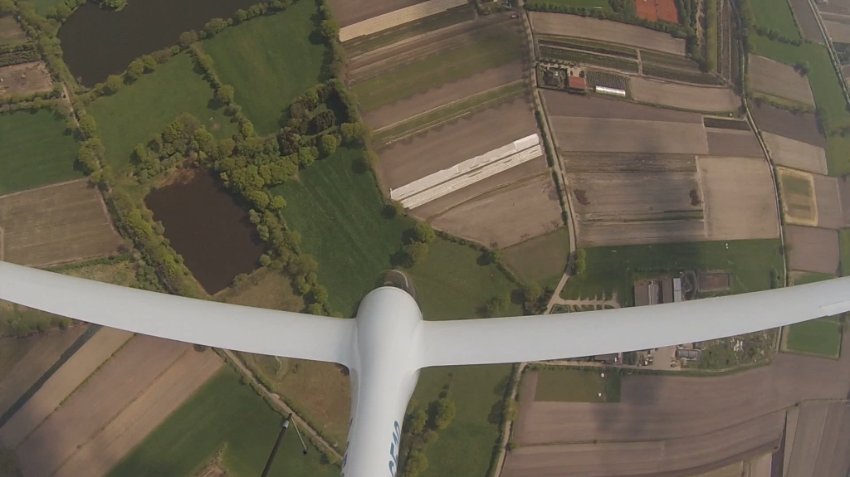The benign flying characteristics of many training gliders, together with the traditional spinning exercises taught by most instructors, cause some confusion about spinning. Spin training often leaves the student with the impression that gliders won’t spin without extreme and deliberate provocation, and the idea that they might some day spin inadvertently seems unthinkable.
Pilots will never accidentally haul the stick fully back and boot the rudder. But they do spin accidentally. In this post I will describe two common ways in which unsuspecting pilots can enter a spin.
Spinning from a low final turn
Here’s an accident which took place in Germany some years ago. Fortunately, nobody was seriously hurt. As you watch the video, look closely at the glider’s attitude.
Unlike the nose-high spin entries you saw in training, this glider entered the spin from a normal flying attitude. From the cockpit, it might have looked like this:
Just before spin entry, the nose attitude looks normal. This is because of the effect of yaw in a turn. When we are banked, the direction of yaw is no longer parallel to the horizon, but inclined. This means that yawing into the turn (over-ruddering) will not only cause a skid, but will also move the nose down.

From the pilot’s perspective, this over-ruddering masks the warning signs. Without this, it would be obvious that the nose is too high. In this way, the distracted and unsuspecting pilot can gradually increase rudder input and simultaneously match it with elevator input, until both controls are close to their stops. At this point, the glider will spin.
The only clues that something is wrong come from the yaw string, which we can see is deflected to the inside of the turn indicating a skid, and from the stick, which is in a rearward position.
Of course, the pilot won’t make the mistake of over-ruddering unless they are distracted, or deceived by a visual illusion of some sort. Unfortunately there are several very powerful illusions which come into play at low level, making over-ruddering more likely.
Shallow bank angles also lead to over-ruddering because the pilot subconsciously feels that the turn is not proceeding rapidly enough. For this reason, it is best to develop the habit of flying well-banked turns all the time. A bank angle of 30-45 degrees is ideal. Note that bank angles usually feel more extreme than they really are, so go on – crank it over!
Pilots returning low to their home airfield often make the mistake of allowing the nose to rise slightly, due to the ground appearing close. When they make the final turn, they use a shallow bank for the same reason. Then the visual illusions cause them to over-rudder, and this sets them up perfectly for a spin.
Fly the Glider
Here are three things you can do to avoid spinning off the final turn:
- Maintain a safe gliding attitude and airspeed, especially when close to the ground
- Fly well-banked turns, even if close to the ground
- Monitor the yaw string and be aware of the visual illusions which occur at low level
Spinning into the mountain
When thermal soaring close to a mountain ridge, there are many factors to consider. A full briefing on mountain safety is beyond the scope of this post, but you can look here (short) or here (longer, read p7-12.) One of the most important principles is to never start a turn towards the hill.
The reason for this rule is that it is highly likely you will end up in sinking air, with a tailwind, pointing at the mountain. Not a good combination!
Pilots who have made this mistake will often panic and attempt to turn as rapidly as possible in order to avoid the mountain. With careless control inputs, any over-ruddering will lead to a spin, as shown in the following simulation. The nose doesn’t look at all high before spin entry, and even the speed is relatively fast. Remember – in a steep turn, the stall speed is much higher than normal and it’s possible to spin at speeds you would normally consider to be safe. Always be aware of your stick position – if it is a long way back, you are close to the stall!
However, it doesn’t have to end this way. Instead of panicking and trying to turn as rapidly as possible, we should keep cool, look at the terrain and plan our flight path to use all of the space available. This will mean we pass very close to the mountain, but at a safe speed and with minimal G loading. This minimises the risk of a stall or spin, either of which would be catastrophic.
After escaping from this perilous situation, promise yourself never to get into it again!
Fly the Glider
Here’s what you can do to avoid spinning into the mountain:
- Never start a turn towards the hill, even if you think you have plenty of space
- If you find yourself pointing at the mountain with limited space, only manoeuvre as hard as is necessary to avoid the ground
- Monitor attitude, airspeed and yaw string and avoid over-ruddering

Great spin awareness article.